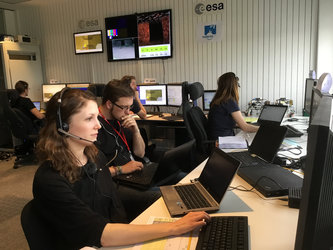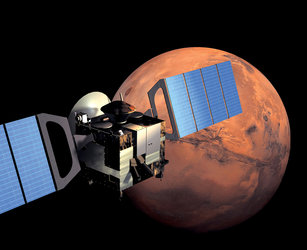MEXAR2 and RAXEM
Advanced Planning for Spacecraft Data Downlink and Telecommands Uplink
Spacecraft like Mars Express (MEX) are not constantly in contact with ground stations; therefore data generated onboard must be stored, waiting to be downloaded during a future ground station pass. The goal of the mission planner is to schedule these dumps in order to avoid losing data by running out of onboard memory. Similarly, the uplink of telecommands (TCs) must also be scheduled during the limited visibility periods so that all TCs reach the satellite before their respective execution times.
The MEXAR2 tool generates data dump plans, and RAXEM schedules the uplink of telecommands using artificial intelligence technologies.
Keywords: artificial intelligence, mixed-initiative, scheduling, flow-network
Results
MEXAR2 and RAXEM are stable prototypes fully integrated in the MEX mission planning system.
MEXAR2 has reduced the time needed to generate dump plans by 50%, and produces plans of higher quality, therefore increasing the mission’s science return and reduce the required ground station coverage time.
Technology
MEXAR2 and RAXEM were both developed in Java. They implements advanced planning and scheduling solutions like constraint programming and flow-network modeling.
Development Team
APSI was developed by the Institute of Cognitive Science and Technology of the Italian National Research Council of Italy (ISTC-CNR)
Description
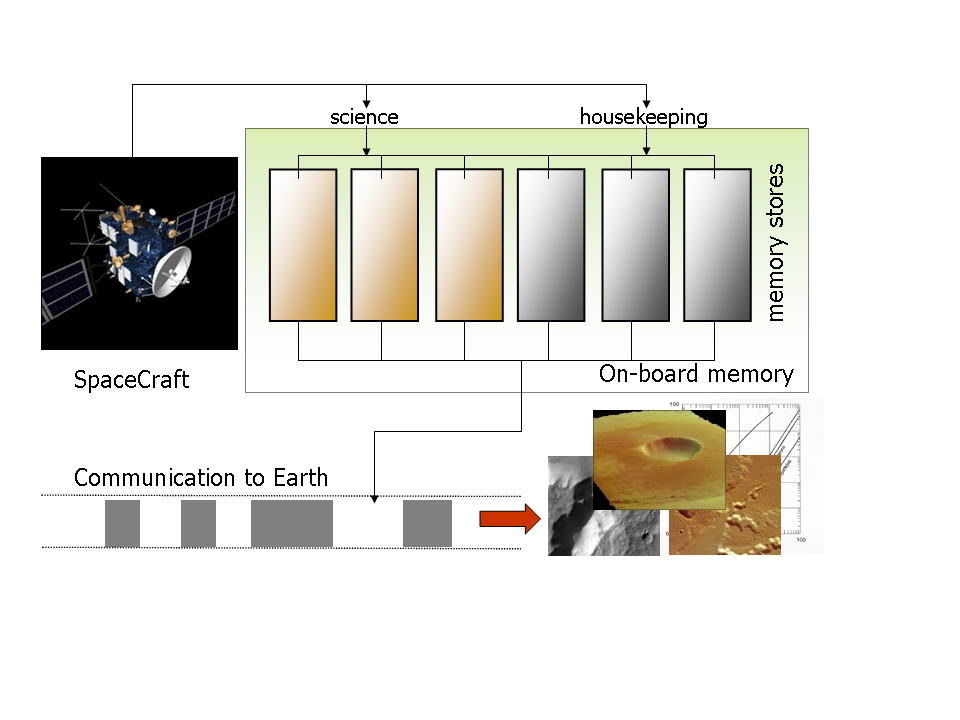
Planning data downlinks and TC uplinks is a critical part of the operations of many satellites. Most modern satellites are not operated in real-time. The main reason is that often it is not possible to have continuous contact with the spacecraft. This can be due to spacecraft occultations, spacecraft pointing, or to the limitation of ground stations availability.
For this reason, most satellites receive from ground time-tagged telecommands (TCs) that must be executed at specified times. The uploading of these TCs must be scheduled during periods of contact, so as to ensure all TCs reach the spacecraft before their respective execution times. Similarly, data generated outside of a period of contact must be stored in the onboard memory. The downlink of this data must then be scheduled in order to make sure the spacecraft never runs out of memory, which would result in a loss of data.
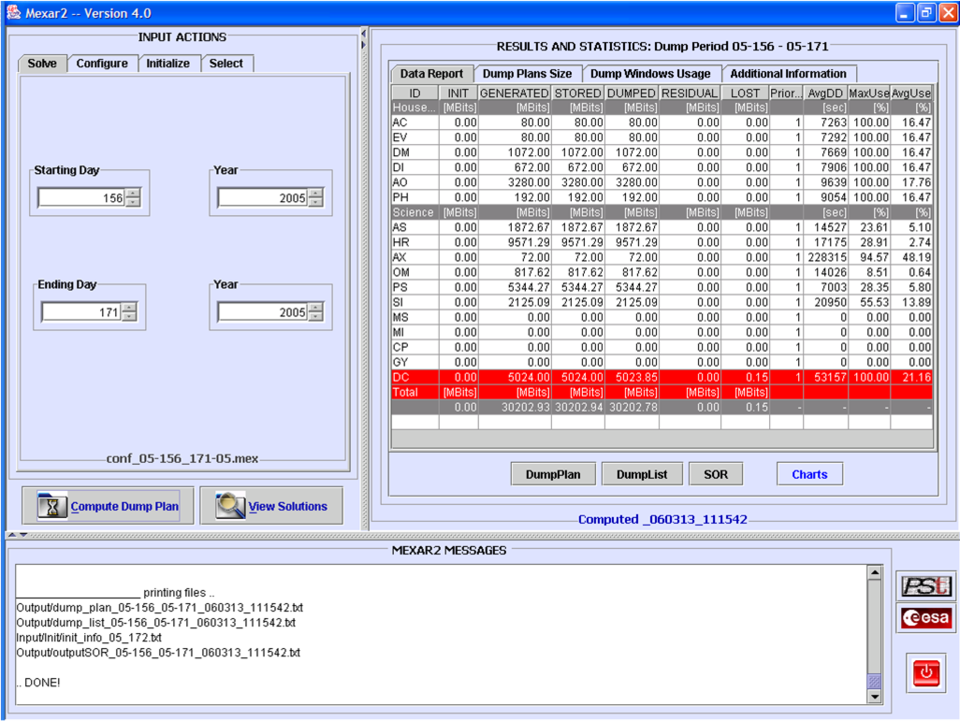
The MEXAR2 tool tackles this latter problem of downloading data before the satellite runs out of memory. In the case of MEX, the Solid State Mass Memory (SSMM) is partitioned into separate packet stores; each packet store is used to store data. The goal of MEXAR2 is to generate good-quality data dump schedules, under the constraints imposed by the limited communication channels and the small sizes of the packet stores w.r.t. the amount of data generated daily. The quality of the generated schedules is judged by the quantity of data downloaded and the earliness of the download.
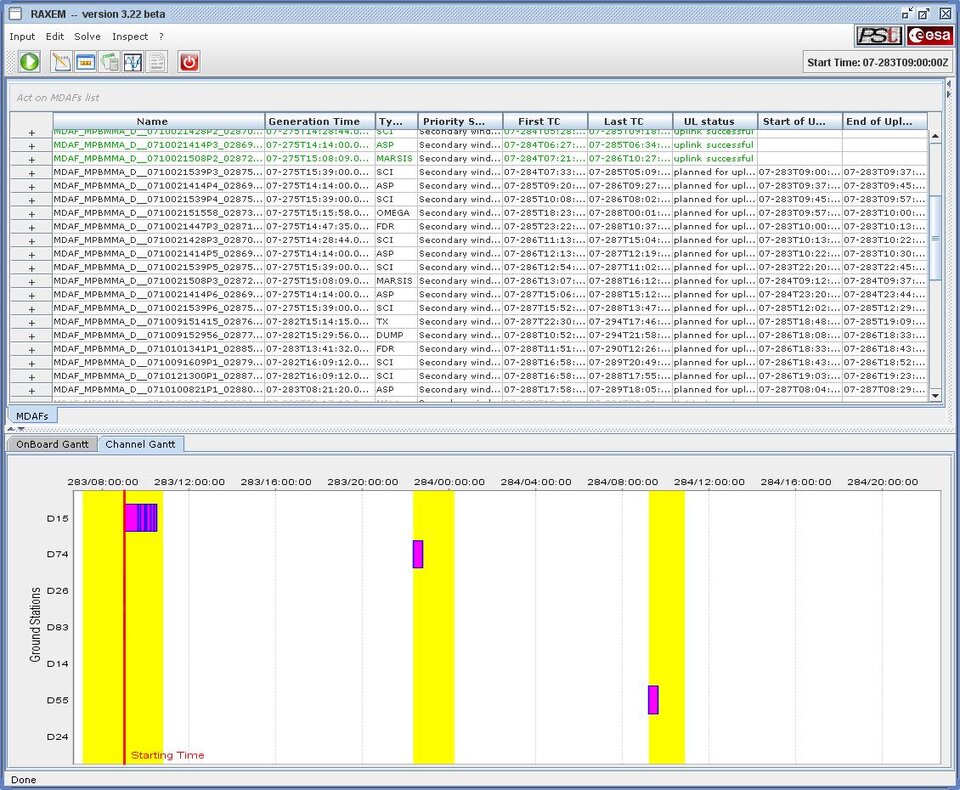
As a follow-on to the MEXAR2 project, the recently started RAXEM project aims at tackling the symmetrical problem of scheduling the uplink of telecommands. On board the spacecraft, the Mission TimeLine (MTL) is stored in a dedicated section of the memory, and is replenished by uploading TCs from the ground. RAXEM has been designed to optimize the safety of the more than fifty command timelines sent to MEX each week. The tool generates the uplinking plan retaining a backup window wherever possible, keeping the on-board timeline as full as possible, and ensuring the safety of the spacecraft at all times.
Both MEXAR2 and RAXEM are built around a Problem Solver module that uses Artificial Intelligence techniques such as Constraint Satisfaction Problem (CSP). The Problem Solver is enhanced with a Man-Machine Interface (MMI, pictures above) that makes the solving process interactive, keeping the user in the loop, for instance by allowing her to perform advanced what-if analysis.
MEXAR2 and RAXEM are now integrated in the MEX mission planning system. MEXAR has reduced the effort needed to generate dump plans by 50%, while allowing more data to be dumped and made available earlier. Even though the tools were developed specifically for MEX, their concepts can be easily extended to other missions.
Publications
- Cesta, A., Cortellessa, G., Denis, M., Donati, A., Fratini, S., Oddi, A., Policella, N., Rabenau, E. and Schulster, J. MEXAR2: AI Solves Mission Planner Problems. In IEEE Intelligent Systems, 22(4):12-19, 2007
- Rabenau, E., Donati, A., Denis, M., Policella, N., Schulster, J., Cesta, A., Cortellessa, G., Fratini, S. and Oddi, A. The RAXEM Tool on Mars Express - Uplink Planning Optimisation and Scheduling Using AI Constraint Resolution. In SpaceOps-08. Proceedings of the 10th International Conference on Space Operations, Heidelberg, Germany, May 12-16, 2008
- Cesta, A., Cortellessa, G., Fratini, S., Oddi, A. and Policella. N. An Innovative Product for Space Mission Planning -- an a posteriori evaluation. In ICAPS-07. Proceedings of the 17th International Conference on Automated Planning and Scheduling (Awarded as Best Application Paper), 2007



